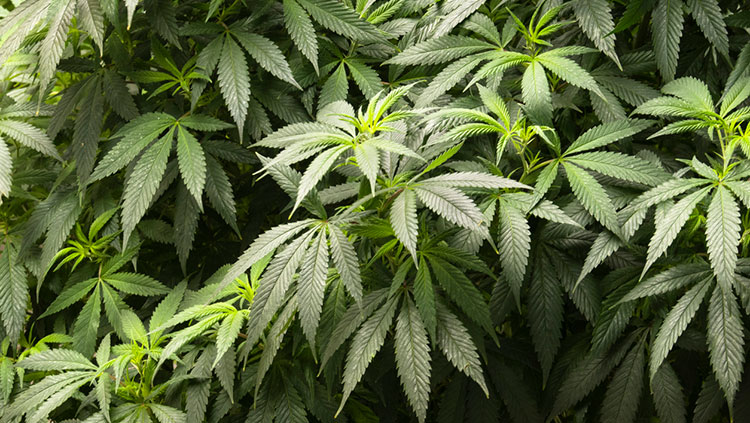
From ads on our electronic devices to bars, clubs, restaurants, and stores — alcohol is displayed across a large part of the world. Alcohol, like tobacco, is addictive.
Together, alcohol abuse and alcohol addiction are a serious and costly national healthcare issue. Aside from secondary behavioral impacts such as drunken driving, disorderly conduct, and even violence, a primary chronic health problem is associated with alcohol addiction: cirrhosis, a late-stage of scarring of the liver. The annual U.S. cost of alcohol abuse and addiction is estimated at $250 billion.
Ethanol, the addictive ingredient in alcoholic drinks, has tricky effects on our bodies. Ethanol is water-soluble so it easily enters the bloodstream and quickly travels to the brain. With just a drink or two, ethanol acts as a stimulant. At higher concentration levels, however, it acts as a depressant, causing intoxication, sleepiness, and even “blackouts,” or short-term memory loss.
Ethanol targets gamma-aminobutyric acid (GABA) receptors, which drive the brain’s inhibitory system. In this capacity, ethanol calms anxiety, weakens muscles, and delays reaction time. Ethanol also blocks the N-methyl-D-aspartate (NMDA) type of glutamate receptors, which alter mood and impair memory, both common features of intoxication. Finally, ethanol can stimulate the brain’s pain-relief circuits, fueled by natural opioid molecules. This accounts in part for ethanol’s feel-good effects in many people. It is also a diuretic — a substance that pulls water from body tissues and can cause dehydration.
Chronic, heavy ethanol use can also change brain structure. People with alcohol use disorder (formerly called alcoholism) can have an unsteady gait, tremors, and slurred speech; these symptoms result from damage to the cerebellum, a brain region important for movement and balance. They also suffer from memory loss due to the degeneration of neurons in the areas of the brain that govern learning and memory.
Binge drinking — excessive alcohol consumption in a short period of time — slows heart rate and causes breathing difficulties, usually the underlying cause of death in alcohol overdose.
When does alcohol drinking become alcohol addiction? Federal surveys have found that nearly 9 in 10 Americans have drunk alcohol at some point in their lives, and an estimated 15 million have an alcohol use disorder, which might develop into addiction. As is true of addictions overall, about half the risk of alcohol addiction is thought to be linked to genetics. Yet, given that not all people who choose to drink become addicted to alcohol, it is clear that both genetic and environmental factors contribute to alcoholism. Currently, no single factor or combination of factors can predict the risk of developing an alcohol use disorder, although having a parent or grandparent with an alcohol use disorder is a good predictor. For this reason, neuroscientists frequently study genetic and environmental factors separately, designing some experiments to understand drinking behavior and others to investigate general issues related to motivation, often using animal models.
Treatments
Most people with a problem with alcohol use can benefit from some form of treatment before their use becomes a dangerous addiction. Treatments include behavioral therapy such as individual counseling, group therapy, and support groups. Some medications (disulfiram, naltrexone, and acamprosate) are used to treat alcohol addiction, and researchers can now use genetic testing to try to optimize therapy for individual drinkers.
Adapted from the 8th edition of Brain Facts by Alison Davis.
CONTENT PROVIDED BY
BrainFacts/SfN
References
American Lung Association. (2017). What's In a Cigarette? http://www.lung.org/stop-smoking/smoking-facts/whats-in-a-cigarette.html
Baumann, M. H., Solis, E., Jr, Watterson, L. R., Marusich, J. A., Fantegrossi, W. E., & Wiley, J. L. (2014). Baths salts, spice, and related designer drugs: the science behind the headlines. The Journal of Neuroscience. 34(46), 15150–15158. https://doi.org/10.1523/JNEUROSCI.3223-14.2014
Centers for Disease Control and Prevention & National Center for Injury Prevention and Control. (2017). Understanding Drug Overdoses and Deaths. https://www.cdc.gov/overdose-prevention/about/understanding-the-opioid-overdose-epidemic.html
Garnier-Dykstra, L. M., Caldeira, K. M., Vincent, K. B., O'Grady, K. E., & Arria, A. M. (2012). Nonmedical use of prescription stimulants during college: four-year trends in exposure opportunity, use, motives, and sources. Journal of American College Health. 60(3), 226–234. https://doi.org/10.1080/07448481.2011.589876
National Institute on Drug Abuse. (2015). The science behind designer drugs. https://archives.drugabuse.gov/news-events/latest-science/science-behind-designer-drugs
National Institute on Drug Abuse. (2017). Cannabis (Marijuana) DrugFacts. https://www.drugabuse.gov/publications/drugfacts/marijuana
National Institute on Drug Abuse. (2017). Cannabis (Marijuana) Research Report: Is marijuana safe and effective as medicine? https://www.drugabuse.gov/publications/drugfacts/marijuana-medicine
National Institute on Drug Abuse. (2017). Commonly Used Drugs Charts. https://www.drugabuse.gov/drugs-abuse/commonly-abused-drugs-charts
National Institute on Drug Abuse. (2017). Drugs, Brains, and Behavior: The Science of Addiction.
Drugs and the Brain. https://www.drugabuse.gov/publications/drugs-brains-behavior-science-addiction/drugs-brain
National Institute on Drug Abuse. (2017). Heroin DrugFacts. https://www.drugabuse.gov/publications/drugfacts/heroin
National Institute on Drug Abuse. (2017). Methamphetamine DrugFacts. https://www.drugabuse.gov/publications/drugfacts/methamphetamine
National Institute on Drug Abuse. (2018, July 2). The Science of Drug Use and Addiction: The Basics. https://archives.drugabuse.gov/publications/media-guide/science-drug-use-addiction-basics
National Institute on Alcohol Abuse and Alcoholism. (2017). Alcohol Facts and Statistics. https://www.niaaa.nih.gov/alcohols-effects-health/alcohol-topics/alcohol-facts-and-statistics
What to Read Next
Also In Diet & Lifestyle
Trending
Popular articles on BrainFacts.org



















